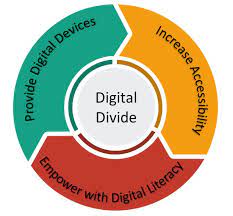The digital divide in Washington.
Apr 05, 2023
This paper discusses the digital divide in Washington State, an issue that has been gaining attention in recent years. The digital divide is a disparity between those who have access to technology, including internet and computers, and those who do not. This can be seen most clearly with communities of color and low-income households, which often lack the resources necessary for adequate technological access.
The effects of the digital divide in Washington can be seen in a number of areas, most notably education and job opportunities. For example, students living in underserved households often don’t have the resources to participate in online learning or access other educational materials that are available through technology. Similarly, low-income communities may have difficulty acquiring the technology necessary to locate job opportunities or develop skills needed for modern day work.

The challenges posed by the digital divide in Washington have led to local advocacy groups and government initiatives aimed at closing the gap between those with access and those without access. These initiatives focus on providing affordable internet access, offering job training programs, and creating libraries equipped with computers and other resources. Additionally, many businesses are beginning to recognize this issue as a pressing one and are engaging in efforts to bridge this gap by offering scholarships for low-income students or discounting their services for certain communities.
In conclusion, it is clear that there exists a digital divide in Washington State that needs to be addressed through policy solutions as well as individual action from both public and private sectors. This is an issue that affects communities of color, low-income households, and other underserved populations in a variety of ways, from educational opportunities to job prospects. Thus it is of utmost importance that the digital divide be addressed to ensure equity for all citizens in Washington State.
Overall, the digital divide is an issue that needs to be addressed on both a local and a national level, with individual actions playing a large role in closing the gap between those with access and those without access. By taking steps towards bridging this divide, we can ensure all citizens have access to technologies that will allow them to participate fully in society.
